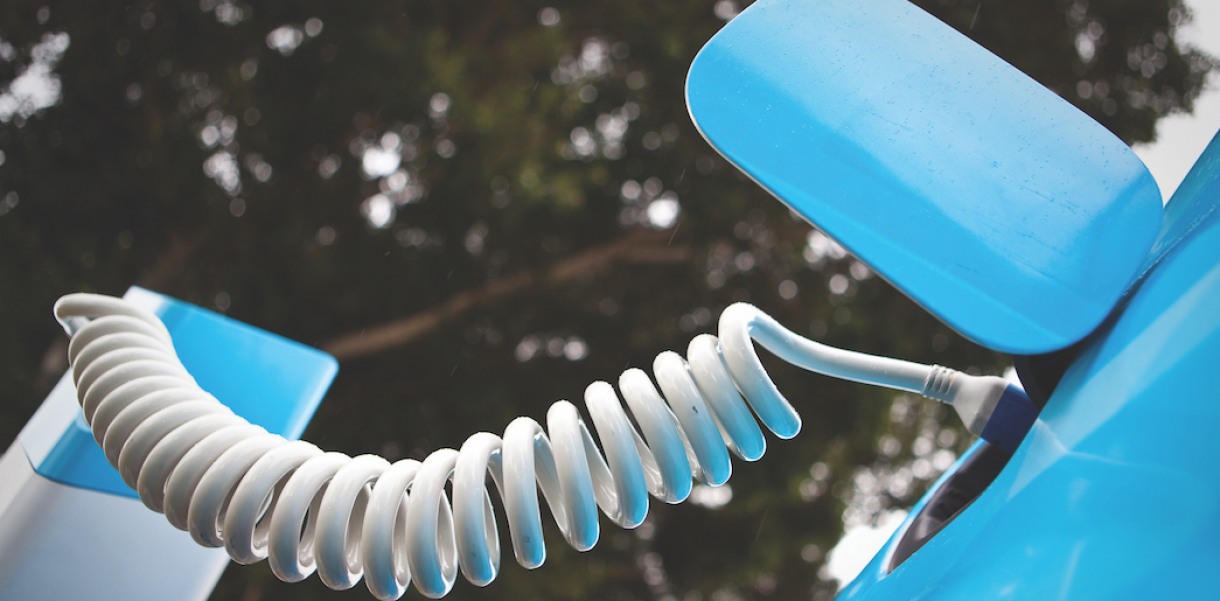What’s the design?
Better Place was an infrastructure company providing battery charging stations and battery swapping for electric vehicles. It was founded in 2007 by Shai Agassi but filed for bankruptcy in 2013. Despite winning an Index Award in 2009, Better Place experienced too many obstacles in paving the way for electric vehicles. Still, the company left its mark in the EV field and is considered a pioneer and crucial actor who may have been too ahead of time.
The hurdle
“Better Place was one of the most exciting and rewarding professional experiences of my career. But it was certainly a roller coaster, both professionally and personally. And I'm still a big believer in Shai’s vision and the vision of the company.”
Joe Paluska was the Vice President of Global Communications and Policy at Better Place from 2008 until 2013. Looking back, he believes four factors played into Better Place’s eventual bankruptcy. “Design, scale, integration and cost – and they’re all related to design,” as he says.
Today, Paluska compares the success and failures of Better Place to two very successful companies he’s helped mentor – Ample and NIO. In many ways, he believed they optimised the business model, strategy and offering that Better Place would have needed to succeed. An example:
“Better Place was both battery swap stations and then either public or private charging spots,” Paluska explains. “The swapping stations were massive and required the company to dig versus Ample, who’s built a battery swap station that only takes the size of two parking spaces (...) and then they've taken the battery itself and broken it down into little LEGO pieces.”
The first Better Place charging station opened in December 2008 in Tel Aviv in Israel. Israel was the first market deployed, but Better Place quickly started doing pilot projects all over, bringing about an important lesson regarding scaling.
“We made the mistake of not building the product in one geography first,” Paluska remembers. “At that time, there was a global race for planting flags in different countries. At that time, Better Place and Renault [engaged car manufacturer, red.] were racing around the world, trying to sign agreements with governments to plant flags in different markets, so we could say ‘we're going to flip this country into electric.’”
“And so you can imagine, you know, how much of a distraction that is when you're publicly committed to all these different markets, and you haven't even built a product yet. (...) Ample are starting small with taxis in San Francisco and then they’ll scale.”
Furthermore, Better Place was burdened by a faulty analysis of cost, which turned out to drain the company’s finances. “We anticipated that our swap stations were going to cost €1,75 million to deploy and they ultimately cost about €4,4 million to deploy. And we anticipated that our charge spots would be about €879 to deploy, but it was actually like €4,000 to $9,000.”
Looking back and comparing to how the EV companies Ample and NIO spend their money, Paluska believes Better Place could also have done it differently. “In the beginning, we were flying between the headquarters in Palo Alto and Tel Aviv with a one-year travel budget of €6,15 million. So imagine, imagine a start-up burning €6,15 million just on airfare.”
In the end, these challenges led to the termination of Better Place: “Towards the end, they tried to sell the company, they tried to rescue the company, but nothing worked. So they just basically sunk the ship and put it into liquidation proceedings in Israel and the United States.”
The strategy
Today, Paluska sees Better Place as a true moonshot project. Like the many failed attempts to launch rockets before we reached the moon, Paluska knows that Better Place was a crucial step in the direction towards detaching from oil and fossil fuels in transportation.
“Shai predicted all this, he predicted that the market would tip. You know, there's an S-curve adoption in technology and Shai knew it would tip. He was too early in that prediction.”
Since then, Paluska has shared his key learnings and insights with EV companies like Ample and NIO to help them succeed in the EV evolution. “When I first learned of the Ample guys, probably seven years ago, I was delighted, and I wanted to meet with them (...) then I was just randomly reached out to by a recruiter out of China, on behalf of William Lee [CEO of NIO, red].
“I was excited to share kind of everything I knew, you know, the good, the bad, the ugly, about Better Place, so that hopefully these guys would be successful with their companies.”
Finally, Paluska shares the question he gets the most when it comes to the journey of Better Place – why didn’t you partner with Tesla?
“We did meet with them, probably, you know, six to 10 times – and there was just no meeting of minds between Shai and Elon [Musk, CEO of Tesla, red.] (...) But you know, Tesla could have made the cars, Better Place could have made the infrastructure and the world would be completely different or maybe lightyears ahead in terms of electrification.”
Tips from the designer
- Start small – build or develop your product in one geography instead of piloting in multiple areas.
- Cost-effectiveness – is your product the most cost-effective and user-friendly out there? Be open to optimising.
- Spend smarter – funds in start-ups are limited, so consider how to spend your money and get as accurate cost predictions as possible.
- Pay it forward – support your mission to change an industry by helping others who want to do the same.
- Bulletproof your ideas – stay open-minded and invite advisors and your team to assess, evaluate and give the project feedback.




